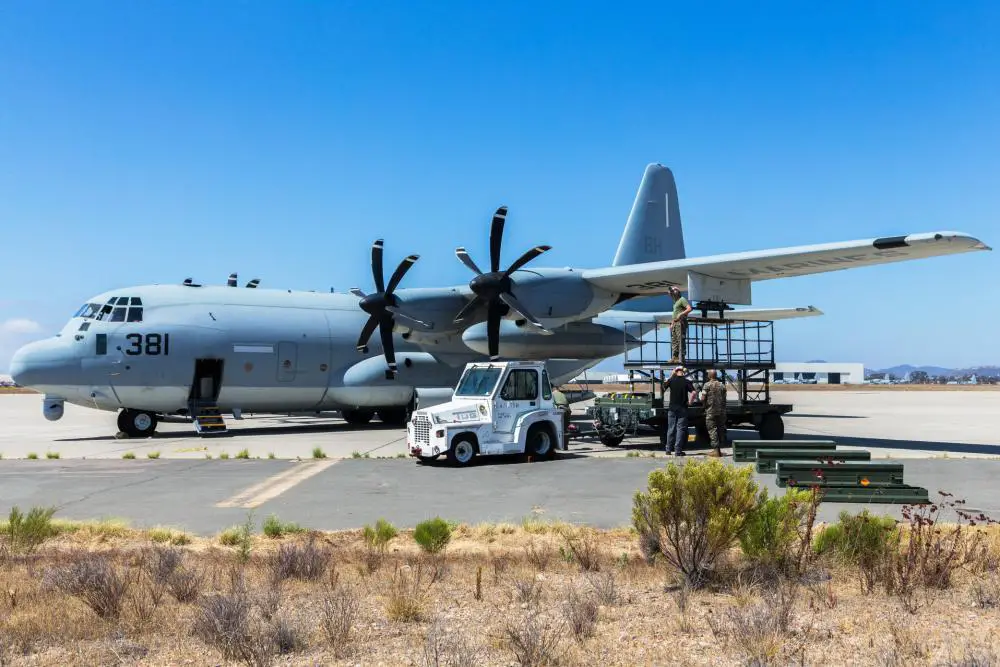U.S. Marines with Marine Aerial Refueler Transport Squadron (VMGR) 252 fly a KC-130J Hercules and fire AGM-114 Hellfire missiles near Marine Corps Air Station Miramar, California, Aug. 29, 2022. VMGR-252 trained in close-air support by using the Harvest Hercules Airborne Weapons Kit. The KC-130 is a multi-role, multi-mission tactical tanker/transport within a 500-nautical-mile (930 km) operating radius, as well as rapid ground refueling when required, which provides the refueling support required by the USMC for its aircraft. VMGR-252 is a subordinate unit of 2nd Marine Aircraft Wing, the aviation combat element of II Marine Expeditionary Force.

The Lockheed Martin (previously Lockheed) KC-130 is a family of the extended-range tanker version of the C-130 Hercules transport aircraft. The KC-130J is the latest variant operated by the United States Marine Corps (USMC), with 48 delivered out of 79 ordered. It replaced older KC-130F, KC-130R, and KC-130T variants for aerial refueling. USMC reserve unit, VMGR-452 operated 12 KC-130T aircraft until May 2021; this was the last USMC reserve unit that operated the legacy KC-130s, completing the corps’ transition to the more advanced Super Hercules. The new KC-130J offers increased utility and much needed improvement in mission performance.

With the addition of the Marine Corps’s ISR / Weapon Mission Kit, the KC-130J will be able to serve as an overwatch aircraft and can deliver ground support fire in the form of Hellfire or Griffin missiles, precision-guided bombs, and eventually 30mm cannon fire in a later upgrade. This capability, designated as “Harvest HAWK” (Hercules Airborne Weapons Kit), can be used in scenarios where precision is not a requisite, such as area denial. The aircraft retains its original capabilities in refueling and transportation. The entire system can be removed in less than a day if necessary. The U.S. Air Force MC-130W Dragon Spear program uses a similar concept.

The AN/AAQ-30 Target Sight System (TSS) integrates an infrared and television camera, and is mounted under the left wing’s external fuel tank. It is the same TSS used on the upgraded AH-1Z Viper attack helicopter. The typical loadout is four Hellfire missiles and 10 Griffin GPS guided missiles. The weapons systems operator uses a Fire Control Console mounted on an HCU-6/E pallet in the KC-130J’s cargo compartment. The USMC plans to acquire three kits per active-duty KC-130J squadron for a total of nine kits, each costing up to US$22 million. It was first test flown on 29 August 2009 by VX-20, and first deployed in October 2010 with VMGR-352.














